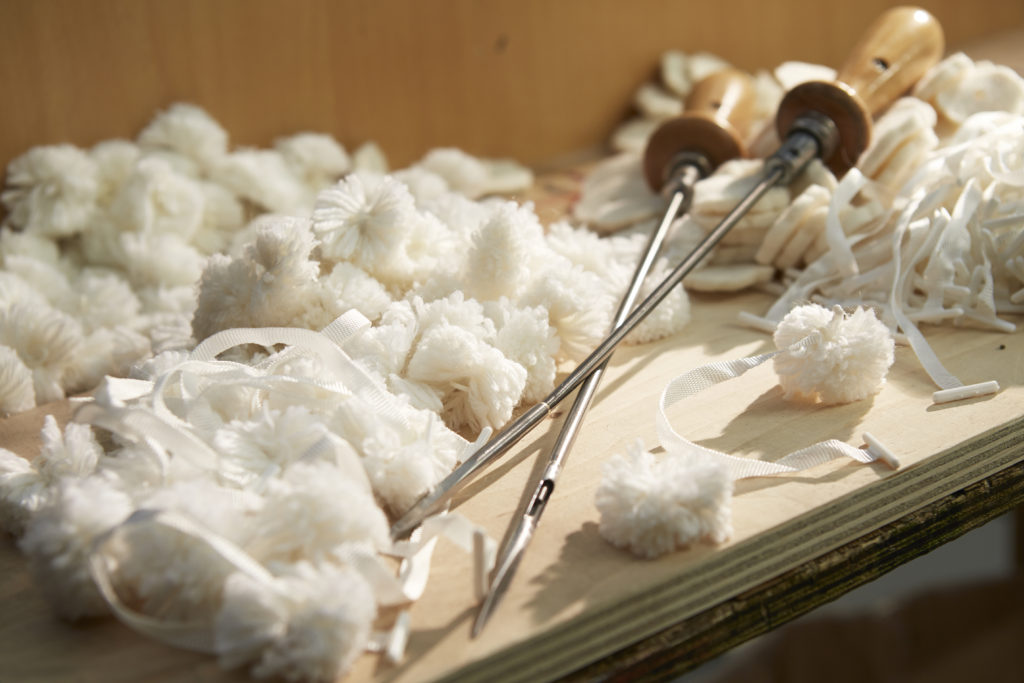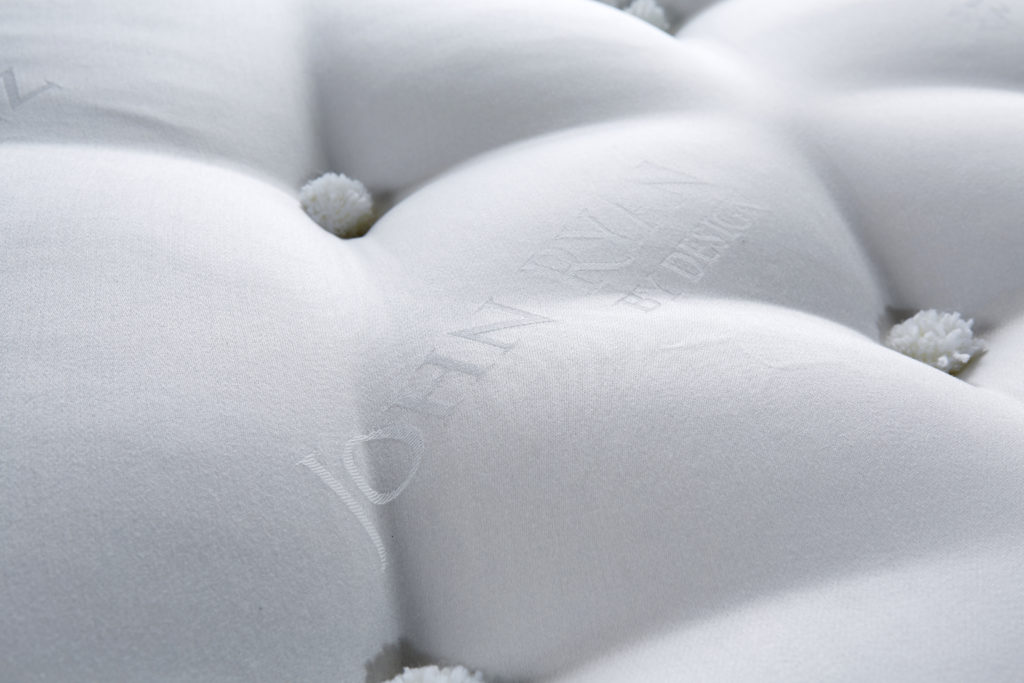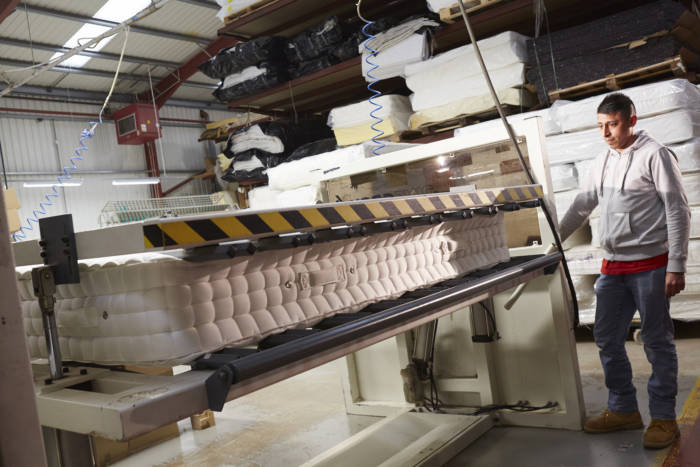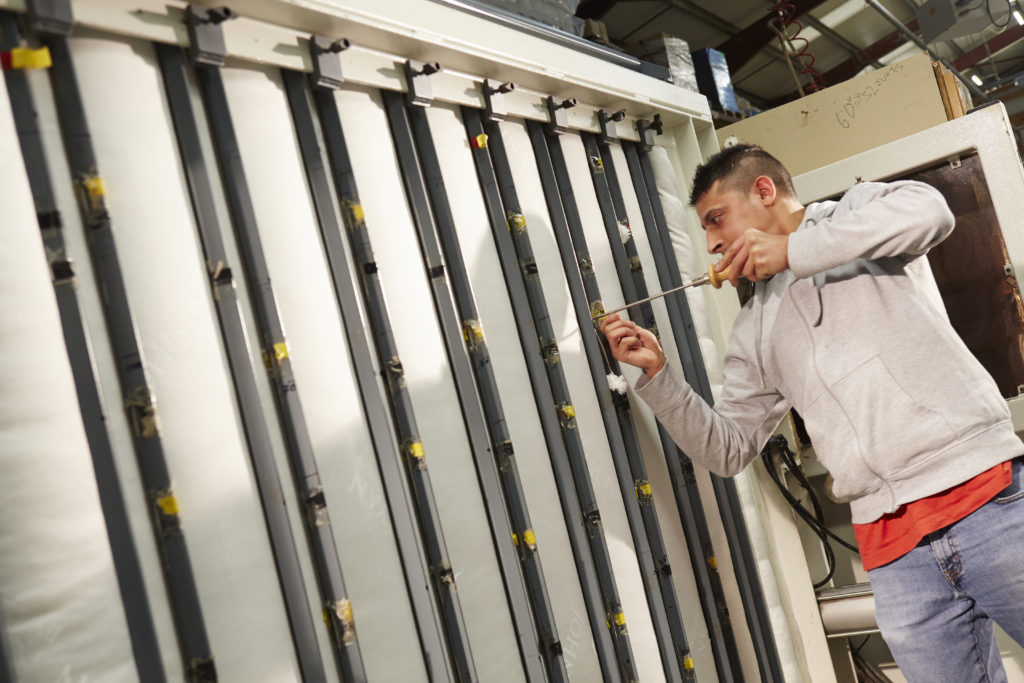Mattress Science
April 2019Mattress Shopping? Why Tufting Matters!
Are you looking for a brand new mattress? If so then you’ll obviously be looking for the best quality sleep experience for your money. You’ll need a mattress that’s supportive, responsive, durable, breathable and comforting. You’ve probably already seen a number of online mattresses some with tufts and some without. Maybe wondering what they are even for.
The most important thing is that you make an informed choice when it comes to shopping for a new mattress, as this way you can avoid regretting your purchase. It’s the little details that can make the biggest difference when deciding on a new mattress, and one of those details; is mattress tufting.
What’s mattress tufting?
This traditional upholstery technique has been around for centuries, and is commonly used on upholstered furniture, seats and mattresses. It’s incredibly useful for making sure any upholstery layers within a mattress stay where they’re supposed to be. It helps pull together each upholstery layer through the spring unit, binding it on each side. Fixing it in place.

Tufting connects the top layer of the mattress with the other comfort layers beneath it. Tufting also prevents the mattress from shifting and losing its shape. Our pocket sprung mattresses have always used tufting to ensure each layer of upholstery is aligned, and so that each mattress has a uniform feel.
Why use tufting?
If tufting isn’t utilised for a mattress then it would be next to impossible to properly secure the upholstery layers. They would only be secured around the edges, which means that they would end up shifting around as time passed, especially if you happen to move around a little when you sleep.
Tufting Reduces Settlement
As your body pushes against a mattress that hasn’t been tufted, some areas of it would end up with smaller amounts of upholstery, and vice versa. The sleeping surface would lack any sort of uniform feel and instead offer only a disruptive sleep experience. Essentially an untufted mattress would react more like a feather duvet that needs to be shaken every month. In order to allow its fillings to realign and settle back into place – of course you wouldn’t be able to do this with your mattress! All of our mattresses are significantly heavier than those you may find in Dreams, Bensons or Furniture village. This is because we use far more upholstery in our models. Giving you far better value for your money.

Tufting is necessary, because, without it, settlement in mattresses would become a huge problem. Before you know it, you’ll be trying to drift off on a lumpy sleep surface that does nothing to soothe and comfort you.
Tufting a mattress to reduce its height
Tufting is also used to help keep high-end mattresses, that contain thousands of grams of upholstery, to a reasonable depth. You’ve heard the story of the Princess and the pea with the stack of mattresses? Well without tufting some of our models start out at 40cm-50cm deep!

he tufting helps compress the layers making them more uniform and making the mattress a respectable 27-33cm deep. When placed on a mattress divan or ottoman it means whilst it’s still deep, you’re not going to need a step ladder to get into your new hand made mattress.
How are mattresses tufted?
Tufting is done by hand, but first, you have to compress the mattress. Given our mattresses weigh anywhere between 40kg and 85kg for a king size, you need a sizeable machine to help compress the untufted mattress. You can see the machine below

Then a skilled craftsperson using a tufting needle carefully sends the needle through the mattress and spring unit with a piece of cotton ribbon. They then secure each side with a tuft. There is some excess when tufting so that when the mattress is released from the compression it then takes the strain from the tufts. Leaving that cloud-like feeling on the surface of the mattress. This is a really time intensive process. If you want to see more detail on how long it takes to make a hand made mattress please have a look at our guide here.

The tuft bobbles we use are 100% wool and are the traditional kind. A lot of people ask if you can feel the tufts, but given they are carefully placed and recessed you should never feel them.
What can I do if my mattress loses a tuft?
We’ve only ever had a handful of comments around loose tufts. In nearly all high-end mattresses they are exceptionally well secured. Very rarely in some instances and older cheaper mattresses, a tuft may come loose or pop off. Especially if the mattress hasn’t been looked after, snagged or caught on something say when moving house. If you lose one tuft your mattress should still be fine as there should be a number of them holding the mattress together. You should never release the tufts or cut them off as the mattress will then start to shift its contents. Also if you let your children use your mattress as a trampoline then the tufts may over time work loose. They are hard working features but do have their limits!
It’s pretty rare that you’ll ever feel mattress tufts, especially when it comes to our range of hand made Natural Fibre mattresses. However, if you have a big aversion to them, then there are always alternatives out there, such as latex foam. Alternatively, a goose down or wool topper can help reduce the issue with tufts if for whatever reason you are sensitive to them.If you have more questions about mattress tufting, please get in touch with our team today, on 0161 437 4419.

Dreaming of the perfect nights sleep?

Ask us a question
There are over 6000 questions and answers submitted by you on all questions about mattresses and bed problems. Enter a keyword such as Vi Spring, John Lewis beds, bad back or Memory Foam and see if your question has already been answered.
If you can’t find an answer in knowledge hub, ask a new question. We aim to respond to all questions within one working day.
Newsletter
Enter your email to join our newsletter. We’ll send you occasional news and mattress expertise.
